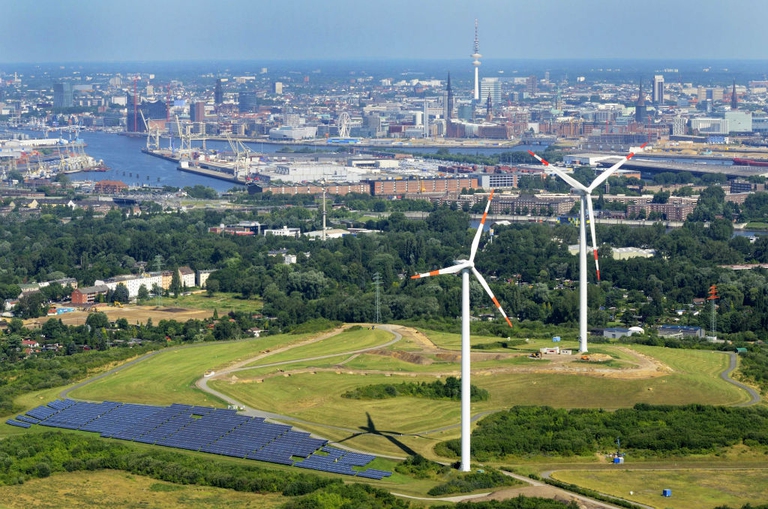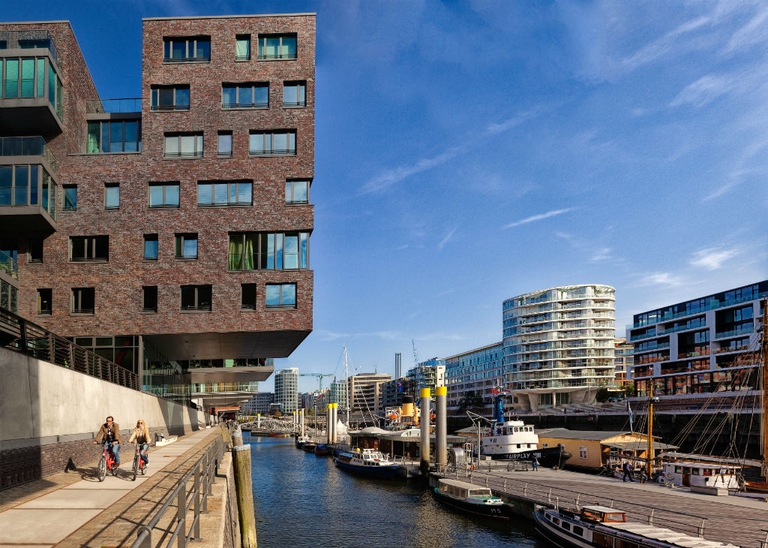
The World Forum on Urban Forests took place from the 28th of November to the first of December. More than 400 experts from 50 countries conversed with politicians, journalists and citizens to design the green cities of the future.
Ciclabili, mobilità elettrica, stretta su plastica e rifiuti. Ecco come la seconda città della Germania sta diventando una smart city.
One of its latest initiatives was the ban on single-use coffee pods and plastic bottles in state-run buildings. The city of Hamburg, along with other German cities, will follow the Senate guidelines setting up new environmental standards in the matter of consumption, purchase and mobility.
Future purchases will be carried out taking into consideration the environmental impact of the products’ entire life cycle, their capacity of being recycled and repaired, packaging, and their impact on climate and on the use of resources. Basically, Hamburg’s annual expenditure of 250 million euros will be spent on more ethical and sustainable products.
This is an important signal, as confirmed by Senator Jens Kerstan of the Greens: “Hamburg’s administration will soon play a leading role in Germany in terms of procurement and contracting.”
The German city also stood out for the Green Network project, which provides a network of bike paths that will connect the entire city. Hamburg plans to take cars off the roads and avoid motor vehicles to enter the city centre by 2034. “In 15 to 20 years it will be possible to explore the city exclusively by bike or on foot,” said Angelika Fritsch, spokeswoman of Hamburg city administration. “We will also offer people opportunities to hike, swim, do water sports, enjoy picnics, restaurants, experience calms and watch nature right in the city”.
Hamburg, appointed European Green Capital, is also a maritime city and its commercial port has a significant impact on the city’s economy. A memorable project was the urban requalification of 155 hectares once destined to port operations: HafenCity is the new district boasting efficient buildings, provided with PV panels and wind turbines, and investing in sustainable mobility. Bicycle paths, bike sharing stations, charging stations for electric vehicles, public green, slow mobility, reduced consumption, renewables, and energy efficiency. This is the right definition of a smart city.
Siamo anche su WhatsApp. Segui il canale ufficiale LifeGate per restare aggiornata, aggiornato sulle ultime notizie e sulle nostre attività.
![]()
Quest'opera è distribuita con Licenza Creative Commons Attribuzione - Non commerciale - Non opere derivate 4.0 Internazionale.
The World Forum on Urban Forests took place from the 28th of November to the first of December. More than 400 experts from 50 countries conversed with politicians, journalists and citizens to design the green cities of the future.
Introducing plants into buildings to absorb CO2, eliminating indoor pollution and improving your mood. This is green architecture.
The Semìno project is a journey of discovery through different countries’ food habits, offering migrants employment opportunities and allowing us to enjoy the properties of vegetables from all over the world.
A few of the best ideas for rooftop farms from around the world. Where farm-to-table agriculture is becoming a key components of urban growth.
A great Amazon reforestation project has been agreed in Brazil, the largest in history. Will it endure the victory of Jair Bolsonaro’s far-right politics in the presidential election?
A million plants and 40,000 trees. Liuzhou Forest City, designed by architect Stefano Boeri, is set to be inaugurated in 2020 in the northern Chinese city.
Urban forests are the local answer to global problems. The benefits are numerous and affect many areas such as the climate, biodiversity, health, tourism.
Architects Stefano Boeri’s call to action on urban forestry asks planners all over the world to consider greening our cities as the core element of all projects.
The project is similar to New York’s famous High Line constructed on the railway that once connected the Meat Market to Midtown. But in the case of Seoullo 7017 in South Korea’s capital Seoul, a walkway has been constructed on an overpass dating back to 1970 where cars once sped along, and where today people can wander and enjoy the revitalised area. The Seoullo 7017









